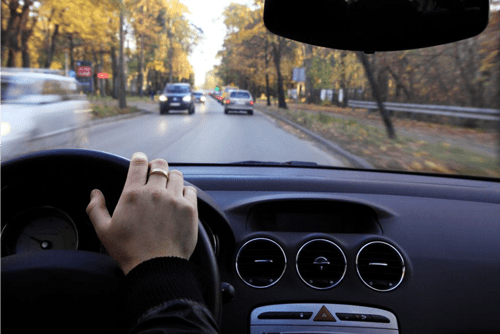- Need Any Help: +1 647-760-5505 or
- info@trubicars.ca

Many Drivers are aware that emotions can play a huge factor in how we drive. If we’re excited or really happy to be driving, we might push the speed limit. If we’re upset, we might miss important road signs and signals. But what most drivers fail to realize is those angry emotions also play a role in how we drive. Many drivers have heard the term “Road Rage”, and this references angry emotions that a driver may experience while they are behind the wheel and how it affects their driving. At Trubicars our goal is to share our knowledge and driving experience with you. We believe it is your duty as an operator of a motorized vehicle to ensure that you remain safe and responsible behind the wheel. We have gathered some tips to help you manage any road rage you may experience and how to avoid road rage.

Oftentimes, one of the leading causes of road rage is the fact that drivers haven’t given themselves enough time to get where they need to go. Regardless if you anticipate heavy volumes of traffic, you should always give yourself extra time to get where you need to go safely.

Tailgating (or following too closely) is considered to be a form of aggressive driving and can oftentimes be mistaken for road rage. In ideal driving conditions, to avoid tailgating, use the 3-second rule! Leave at least 3 seconds between you and the car in front of you. In poor driving conditions, you should be increasing that distance. Speeding is also another form of aggressive driving. If you are traveling at high speeds, you may find it harder to control your vehicle and prevent an accident from occurring. By ensuring you follow the speed limit and also give yourself enough time to reach your destination, you can avoid this type of aggressive driving.

Maintaining a positive attitude is imperative to making smart choices on the road. When we have a positive attitude while driving, we can best react to any situation that we come across on the road. Positive attitudes while driving can also impact other road users as well by setting a good example as to how they should be using the roads as well.

Some people may find it next to impossible to predict how other drivers around them may drive. You must remember that you can only control how you drive, and you can only react to how other drivers drive. If another road user displays any form of aggressive driving, instead of getting even, using your horn excessively, or making many different hand gestures towards them, try to relax and give yourself some space from that driver.

Having good communication skills on the road allows you to somewhat predict how other road users interact with the road. This can involve correctly using your indicators, hazard lights, eye contact, waves, and nods. An example of this might be seen at pedestrian crosswalks. If there are pedestrians waiting to cross when you are stopped, you can wave them through with a friendly hand gesture, letting them know they can cross before you advance or turn through. Always ensure that you are communicating with other road users in a positive manner. While there might be instances where you’re angry at how another driver is driving unsafe, never flash your lights, honk your horn at them or display other angry signals to them.

If there is an instance where your safety and the safety of your passengers are threatened, it’s always best not to get out of the vehicle and interact with the other driver. Instead, consider pulling over and contacting the authorities. Police personnel have better tactics on how to deal with aggressive drivers, and there are laws put in place to protect all road users. If there is an instance where your passengers are causing you to feel frustrated. Instead of letting the frustration pile up, calmly remind your passengers to avoid “back seat driving” (where they are telling you what you should and shouldn’t do on the road). Even if you have to pull over, make sure that you pull over safely and address any issues before resuming driving.
At Trubicars, we recognize and encourage our students to remember that driving is a big responsibility, and it is your duty as an operator of a motorized vehicle to ensure that you remain safe and responsible behind the wheel. Emotions always play a huge factor in how we drive our vehicles. It’s always important to ensure that you don’t engage in road rage tendencies. If you are looking for more information on tips to avoid driving with road rage, check out the Trubicars website!

 February 13, 2024 by
February 13, 2024 by Reema Sharma
Reema Sharma
 January 17, 2024 by
January 17, 2024 by Trubicars
Trubicars
 January 17, 2024 by
January 17, 2024 by Trubicars
Trubicars
Once you acquire the knowledge provided in
those tests, you are ready to pass the
test,
the first time.
